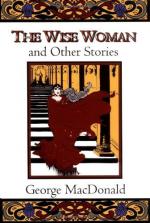|
This section contains 7,134 words (approx. 24 pages at 300 words per page) |

|
SOURCE: “Allegory, Orthodoxy, Ambivalence: MacDonald's ‘The Day Boy and the Night Girl’,” in Children's Literature, Vol. 16, 1988, pp. 57-75.
In the following essay, Marshall examines MacDonald's use of generic fantasy elements in “The Day Boy and the Night Girl.”
“Since polarization dominates the child's mind,” writes Bruno Bettelheim, “it also dominates fairy tales” (9). The characterization in George MacDonald's fairy tale “The Day Boy and the Night Girl” evinces such polarization: Photogen knows and loves only light, Nycteris can survive and flourish only in darkness. But the story, the last fairy tale MacDonald ever wrote,1 subverts numerous expectations a reader might bring to the genre. Not only does the split between Photogen and Nycteris lack any obvious ethical significance, but the final point of the tale is the necessary joining of the realms of darkness and light. Ordinarily in fairy tale, a plot in which the good, beautiful, and clever...
|
This section contains 7,134 words (approx. 24 pages at 300 words per page) |

|


